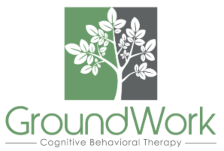How CBT Teaches You to Challenge Negative Thought Patterns
 Cognitive Behavioral Therapy (CBT) has stood the test of time as one of the most effective, evidence-based treatments for various mental health challenges, including anxiety, depression, and obsessive-compulsive disorder (OCD). If you’ve been struggling with overwhelming thoughts or unhealthy mental habits, CBT might be the solution you’ve been searching for.
Cognitive Behavioral Therapy (CBT) has stood the test of time as one of the most effective, evidence-based treatments for various mental health challenges, including anxiety, depression, and obsessive-compulsive disorder (OCD). If you’ve been struggling with overwhelming thoughts or unhealthy mental habits, CBT might be the solution you’ve been searching for.
This blog dives into how CBT helps you understand and challenge negative thought patterns, guiding you toward a healthier, more balanced mental state. Along the way, we’ll discuss common examples, practical techniques, and the types of benefits you can expect from this powerful therapy.
Understanding Negative Thought Patterns
Negative thought patterns are automatic, unhelpful ways of thinking that can distort reality, impact decisions, and fuel emotional distress. Often, we don’t even realize we’re falling into these thinking traps until the effects start to take a toll on our mental and emotional well-being.
Common Types of Negative Thinking
Here are a few “thinking errors” many of us unintentionally adopt, and how they can manifest in your everyday life:
- All-or-Nothing Thinking
Viewing situations as all good or all bad, with no middle ground. For example, “I failed that presentation, so I’m terrible at my job.”
- Catastrophizing
Assuming the worst will happen, even when there’s little evidence to support it. Example: “If I make a mistake, my entire career will fall apart.”
- Overgeneralization
Drawing broad conclusions from a single event, such as thinking, “I was awkward during one meeting; I’ll always embarrass myself.”
It’s Not About “Positive Thinking”
A common misconception about CBT is that it simply encourages “positive thinking.” Instead, CBT centers on developing rational, balanced, and healthy alternatives to self-defeating thoughts. It’s about challenging distorted thinking patterns and replacing them with thoughts that are both realistic and empowering.
Core CBT Techniques to Challenge Negative Thinking
CBT isn’t a passive therapy where you merely talk about your experiences. It’s hands-on, practical, and revolves around equipping you with real tools to transform your mindset.
1. Thought Records
A foundational CBT tool, thought records guide you to track and challenge unhelpful thoughts. Here’s how:
- Write down a specific situation that triggered unwanted emotions (e.g., “I think I upset my coworker during our meeting”).
- Identify the automatic thought you had during or after the event.
- Evaluate evidence for and against this thought to determine its accuracy.
- Consider a more balanced perspective (e.g., “They seemed distracted because of their workload, not my comments”).
2. Cognitive Restructuring
This is the process of actively changing your negative thoughts into healthier alternatives. It’s not about sugar-coating reality but learning to:
- Spot thinking errors when they arise.
- Reassess whether your thoughts are based on fact or emotion.
- Practice replacing distorted beliefs with constructive, truthful ones.
3. Behavioral Experiments
CBT often involves testing thoughts or assumptions in the real world. For example:
- If you avoid speaking in meetings because you believe others will judge you, your therapist may encourage you to speak up during a smaller meeting and observe people’s reactions.
Real-Life Examples of CBT in Action
Example 1: Overcoming Social Anxiety
- Challenge: “I’ll embarrass myself if I talk to new people.”
- CBT Strategy: This client will begin with recording evidence supporting and refuting this fear and eventually tests the waters by speaking with one new person at a small event. They realize others were kind and welcoming, reframing their assumption.
Example 2: Managing Workplace Stress
- Challenge: “My small mistake will ruin this entire project.”
- CBT Strategy: The client uses cognitive restructuring to review the evidence (e.g., they typically do great work, and mistakes are normal). With this insight, they identify practical next steps to rectify the issue instead of falling into a spiral of self-blame.
The Benefits of Challenging Negative Thought Patterns
Once you start challenging your negative thought patterns through CBT, the benefits often ripple across many areas of your life, such as:
- Improved Emotional Resilience
Learn to handle stress, anxiety, and setbacks with a calmer, more balanced mindset.
- Stronger Relationships
Freeing yourself from negative assumptions helps you communicate better and relate more openly to others.
- Enhanced Problem-Solving Skills
A rational thought process equips you to make confident, well-informed decisions.
- Boosted Self-Esteem
Replacing self-critical thoughts with empowering, truthful beliefs gradually builds confidence.
Why Finding the Right Therapist Matters
CBT’s effectiveness depends not only on your commitment but also on the expertise of your therapist. Because of its proven success, the term “CBT” is often used as a buzzword in the mental health industry. Unfortunately, some individuals may claim they’re offering CBT without proper training or credentials.
For optimal results, you need a licensed, highly trained CBT clinician who can tailor therapy to your unique needs. At GroundWork CBT, our team specializes in evidence-based therapy, combining clinical expertise and training with compassionate and individualized care.
Take the First Step Toward Better Mental Health
Your mental well-being matters, and challenging negative thought patterns through CBT is one of the most empowering ways to regain control of your life. Whether you’re struggling with anxiety, depression, or simply want to live with greater clarity and confidence, our expert clinicians at GroundWork CBT are here to support you.
Take the first step today. Book a session with one of our CBT therapy specialists in Orlando and begin laying the foundation for a healthier, more fulfilling life.
Ready To Make A Change?
GroundWork is proud to offer both in-person &
virtual Telehealth appointments.
In-Person Sessions: Central Florida
Virtual Sessions: Florida, Maine, South Carolina, Montana, Vermont




















